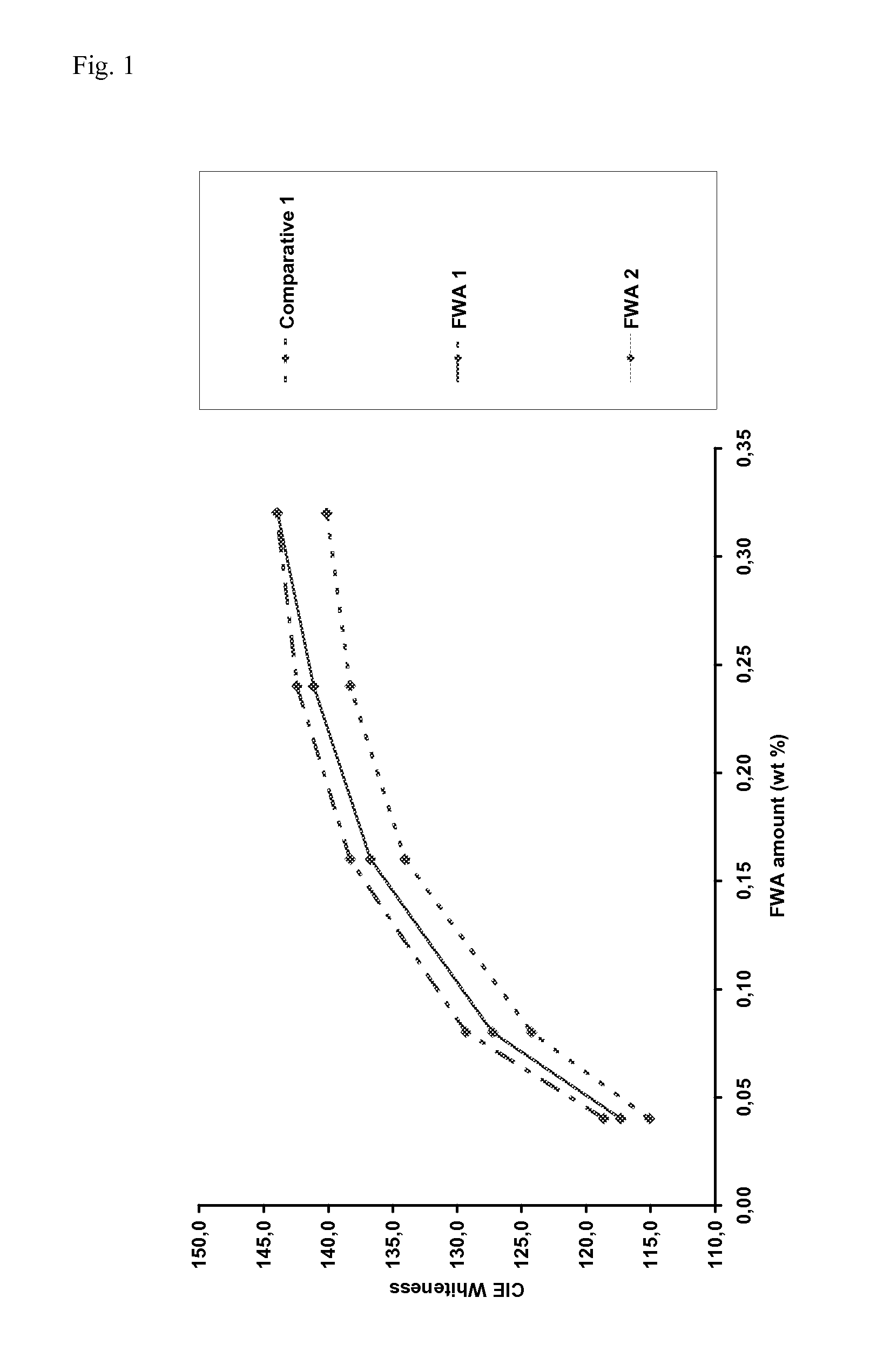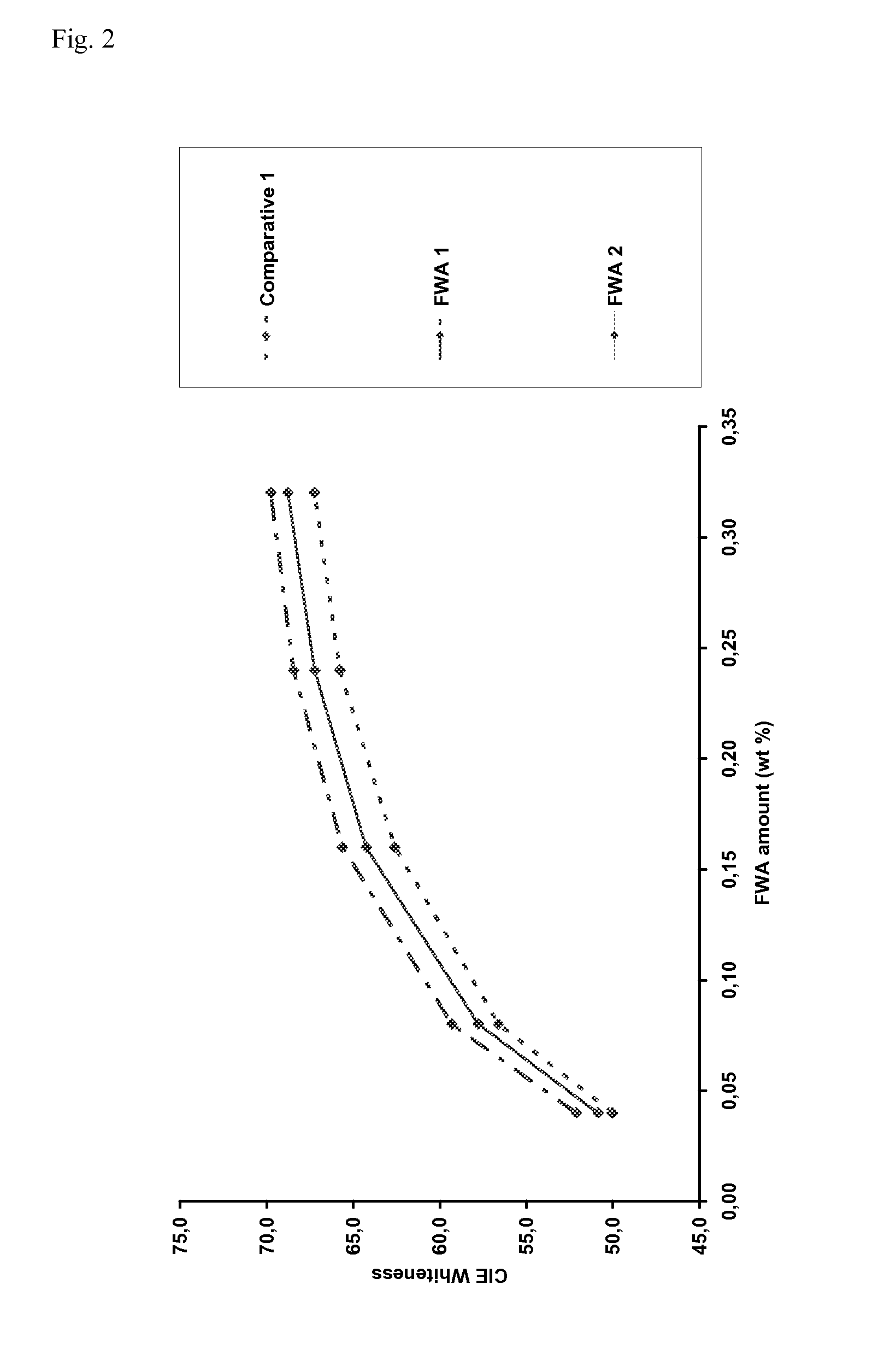Disulfo-type fluorescent whitening agents
a technology of fluorescent whitening agents and disulfotypes, which is applied in the field of disulfotype fluorescent whitening agents to achieve the effect of stable concentrated aqueous preparations and more cost-effectiveness
- Summary
- Abstract
- Description
- Claims
- Application Information
AI Technical Summary
Benefits of technology
Problems solved by technology
Method used
Image
Examples
example 1
[0028]The solubility behaviour of two fluorescent whitening agents used according to the disclosure and of a comparative fluorescent whitening agent of the disulfo-type was studied. Further, the stability behavior of a concentrated aqueous solution was tested. 10% (w / w) solution of sodium hydroxide (222 g) was added dropwise to the reaction mixture to keep the pH at 4.5 while the mixture was heated up to 16° C.
[0029]The tested fluorescent whitening agents according to disclosure were the following:
For comparison, the following, commonly used fluorescent whitening agent of the disulfo-type was used:
[0030]The solubility of the fluorescent whitening agents was determined as follows: a dry powder of fluorescent whitening agent was added to 50 ml of distilled water until the saturation point was reached. The thus obtained saturated solution was filtered, dried and the dried residue was weighted.
[0031]The following results were obtained: 27.8% for FWA 1; 24.2% for FWA 2; and 6.9% for Comp...
example 2
[0034]The whitening performance of the FWAs of Example 1 was studied using the following test procedure.
[0035]The wood-free furnish (pulp suspension) was composed of 70 pts (parts, based on weight) of short fibres and 30 pts of long fibres with a grinding degree of 30-35° SR (Schopper-Riegler). The wood-containing furnish was composed of 50 pts of mechanical pulp, 35 pts of long fibres and 15 pts of short fibres with a grinding degree of 40° SR. 800 ml of a 0.625% of corresponding furnish were weighted in a beaker to prepare a 5 g hand sheet of ˜120 g / m2 for each experimental series. A 0.1 wt % FWA solution was prepared using distilled water. The amounts of FWA as indicated in Table 1 below were achieved by addition of a corresponding amount of the 0.1 wt % FWA solution by a pipette to the stirred pulp suspension which was allowed to stir for 10 minutes after FWA addition. The amounts of FWA in Table 1 are calculated as active ingredient on 100 wt % of dry pulp.
[0036]A wet filter pa...
PUM
| Property | Measurement | Unit |
|---|---|---|
| temperature | aaaaa | aaaaa |
| wt % | aaaaa | aaaaa |
| fluorescent | aaaaa | aaaaa |
Abstract
Description
Claims
Application Information
 Login to View More
Login to View More - R&D
- Intellectual Property
- Life Sciences
- Materials
- Tech Scout
- Unparalleled Data Quality
- Higher Quality Content
- 60% Fewer Hallucinations
Browse by: Latest US Patents, China's latest patents, Technical Efficacy Thesaurus, Application Domain, Technology Topic, Popular Technical Reports.
© 2025 PatSnap. All rights reserved.Legal|Privacy policy|Modern Slavery Act Transparency Statement|Sitemap|About US| Contact US: help@patsnap.com



